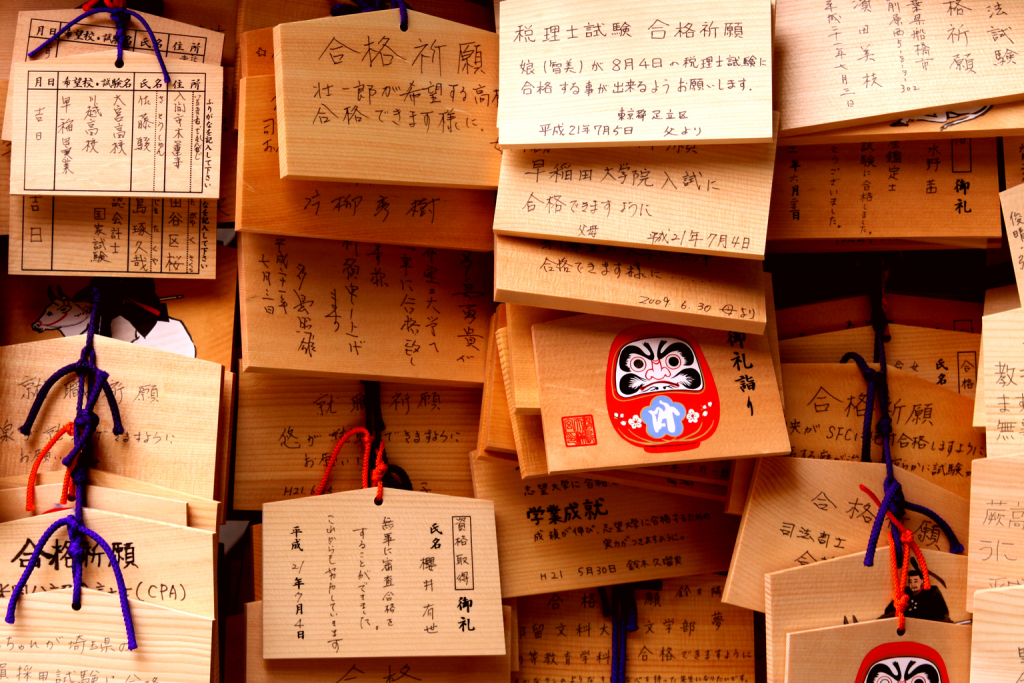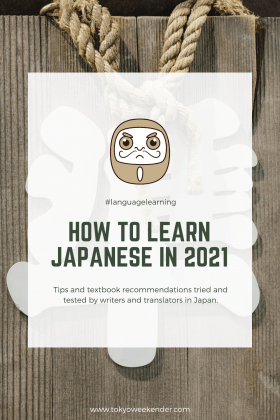One of the pleasures (and pains) of living abroad is learning the language so that we can make our stay (no matter how long) a little more comfortable. Learning Japanese is no piece of cake. It has a daunting and complicated writing system and unintuitive grammar for some, but learning it will enhance your life in Japan infinitely.
Be patient with yourself. It will take hard work, discipline and practice before you can naturally shift in and out of Japanese and reach a level that is comparable to that of a person your age. Remember that it took you at least 16 years to learn your native language (fluently) and that you’re now preparing to cram just as much information in much less time.
Whether you’ve been studying Japanese for one or five years, there might be a point or two in your language journey you want to work on this year. Maybe you want to work on your conversation skills or maybe you want to read your very first novel in Japanese. Below are some resources and tricks as kindly suggested by other members of the TW editorial team who have been there, done that a couple of times. There are different types of learners, and chances are you already know what works and what doesn’t work for you, so keep that in mind while you read.
Getting Started
Starting with the basics, Japanese uses three different writing systems and neither resembles the Roman alphabet. (For simplicity and practicality’s sake, we’re excluding romaji from this guide.) The first one you’ll want to learn is hiragana.
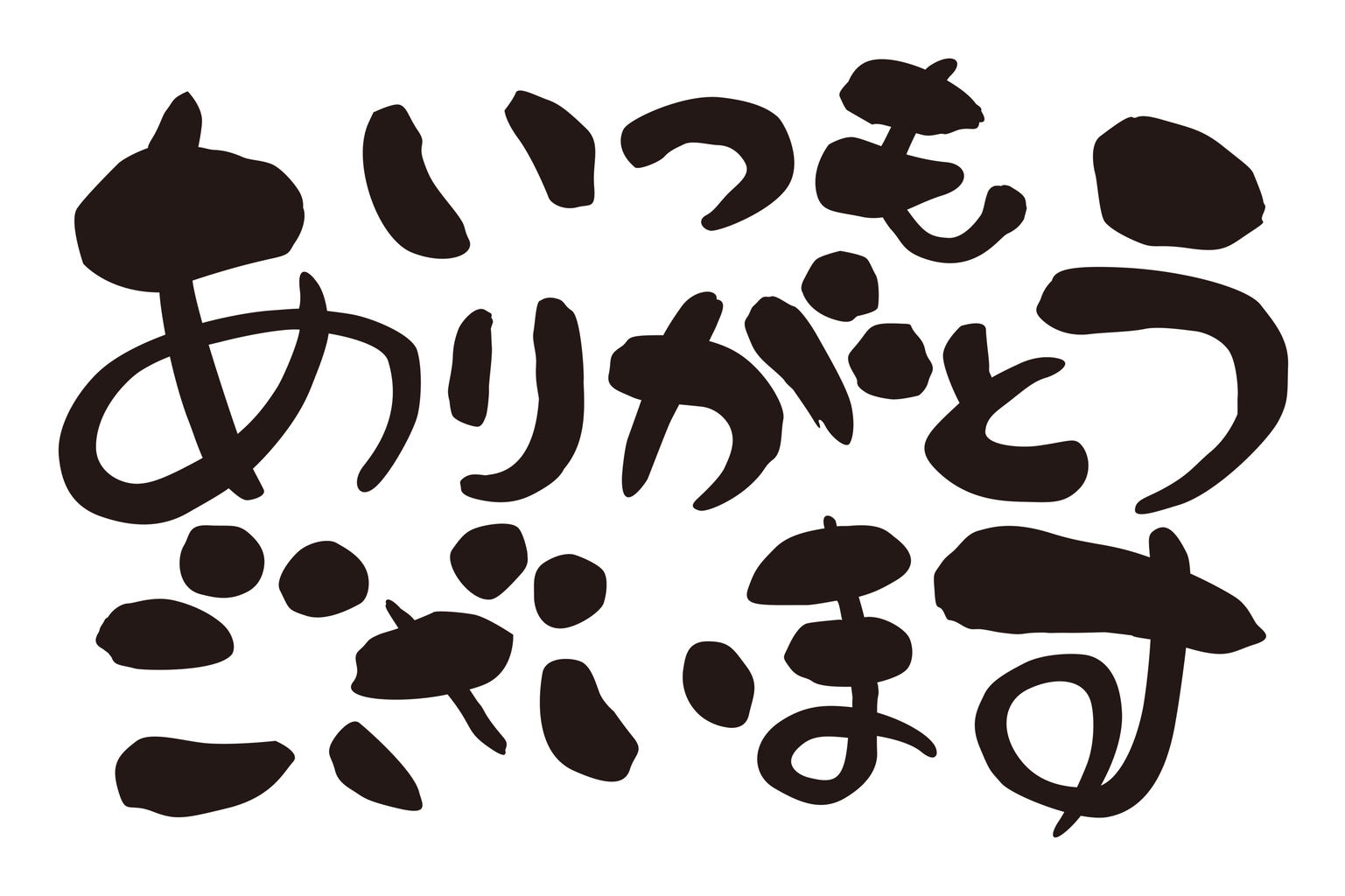 Knowing hiragana will allow you to read basic words and distinguish the different grammatical markers, also sometimes called particles, within a sentence. On average, it takes adults a handful of days at most to memorize the 46 characters. After getting the hang of hiragana, you can move on to katakana, a sister syllabary more often used when writing foreign or borrowed words and emphasis.
Knowing hiragana will allow you to read basic words and distinguish the different grammatical markers, also sometimes called particles, within a sentence. On average, it takes adults a handful of days at most to memorize the 46 characters. After getting the hang of hiragana, you can move on to katakana, a sister syllabary more often used when writing foreign or borrowed words and emphasis.
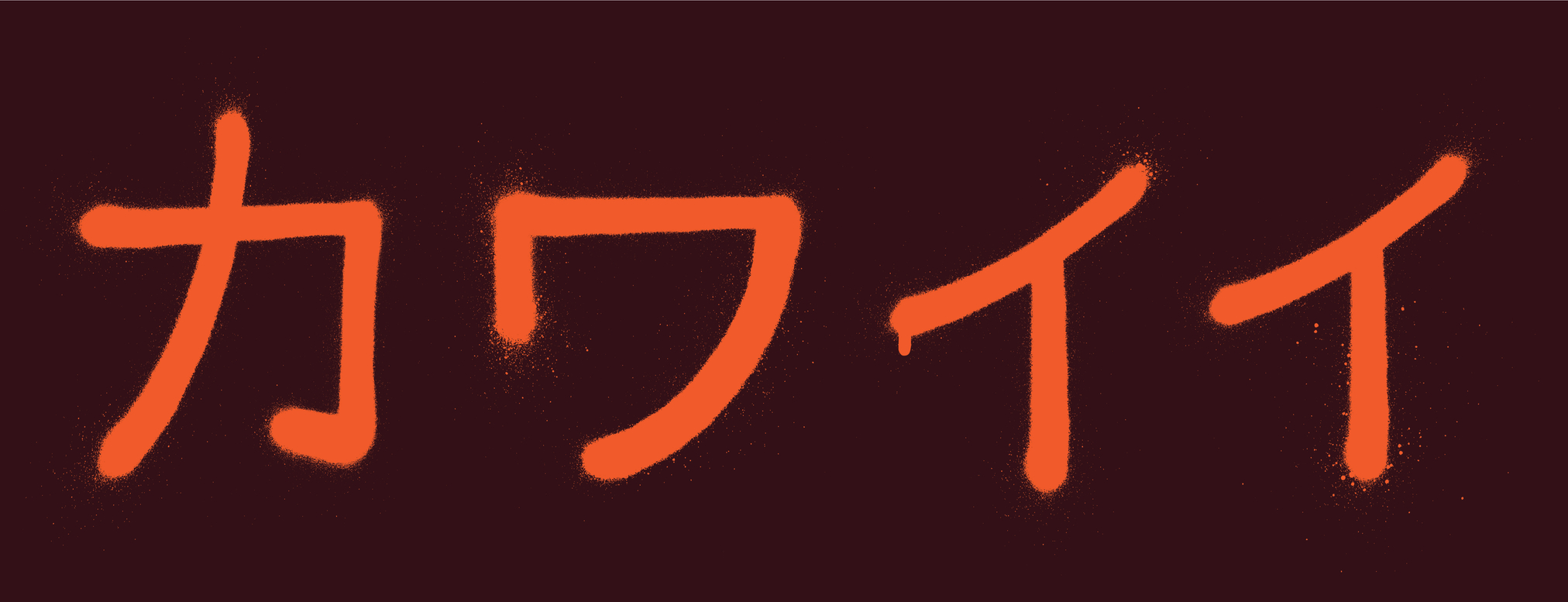
Usually, you will learn hiragana and katakana within the first two weeks of starting your language learning journey. It will take much longer to understand the nuance in usage, but there’s plenty of time to worry about that a little later. Eventually, you will also have to learn kanji, the Chinese characters used to write most of Japanese names, nouns, adjectives and verbs.
Here is an example sentence to show how all three writing systems work together:
彼らは猫をトムとジェリーと名づけた。Karera wa neko o Tomu to Jerii to nazuketa. They named their cats Tom and Jerry.
While some grammar books (more on that below) may include a learning guide to hiragana and katakana, others will expect users to have already learned them elsewhere. Luckily there are plenty of online resources for Japanese learners to get started as soon as they feel ready.
Tofugu, a beloved and respected Japanese language and culture site, has a great guide to learning hiragana using mnemonics. While this method is good for remembering all 46 characters quickly, it doesn’t offer much actual writing practice, so we’d recommend this one for those who are looking to crunch language study or need a refresher. If writing is something you want to incorporate in your learning (and there are a lot of benefits to this!), MLCJapanese offers a great series of free email courses with comprehensive study material. Books and Bao also did a great roundup of the best ways to learn hiragana and katana here. Trying a couple of these methods might be a good way to determine which type of learner you are if this is your first time studying a second or third language as an adult.

Photo by Ryoji Iwata on Unsplash
Learning Japanese Grammar
A great language teacher of mine once said: “It’s easier to learn something and then intentionally omit it than ignoring it and learning it later…” or something along those lines. You get the gist. This is a great philosophy to adopt when learning any language. Writing Japanese will feel very different compared to speaking Japanese, and usually writing it, especially in an academic setting, will at first feel very stiff if you’ve heard any colloquial Japanese, which is often very loose. Trust the process because it will be easier to learn proper Japanese and formulate grammatically-correct sentences first and then learn the socially accepted errors (like dropping certain particles) than the other way around.
A Japanese sentence follows different syntax rules than those of English, notably placing the verb at the end, preceded by the direct object. For example, “Alice is eating lunch” would become “Alice lunch is eating” in Japanese. The best way to learn Japanese grammar is through a good ol’ textbook and luckily language learners are spoiled with choice in this area. Here are some recommended grammar series, tried and tested by members of the Tokyo Weekender team:
For beginners: The Genki series.
This series is great for those who don’t have classroom support but still enjoy a structured learning environment. Much of the grammar points are explained in English and each lesson offers adequate exercises. Lessons are also cumulative so you will use previously learned grammar points and vocabulary regularly, ensuring that you are actively using what you’ve learned as you progress through the books.
For full immersion: The Minna no Nihongo series.
Having English explanations (or explanations in your native tongue) can be really helpful in the first few months, but relying on them for too long will become a crutch and a big obstacle to becoming fluent. Switching to an all-Japanese textbook is a really good way to gain more independence and start getting used to reading Japanese outside the context of your exercises. Minna no Nihongo is also a great option for visual learners and offers a lot of examples for each grammatical point.
Both the Genki and Minna no Nihongo series are popular choices for Japanese classes taught abroad and in Japan because they offer a clear, linear path to fluency. There is, however, a particular group of grammar books centered around the Japanese Language Proficiency Test (JLPT). They offer another way to structure your Japanese learning route, this time based on taking and passing any of the JLPT tests, which can be useful if you’re looking to work in Japan.
For simplicity and effectiveness: The TRY! series.
If you get along with the format and flow of the Genki series, the TRY! series is a great way to transition your learning into one that aims for the JLPT. There is one book for each level (N1 to N5). You might like to consider adding a vocabulary book, as the books themselves don’t really provide extensive vocabulary lists.
For advanced learners: The New Kanzen Master series.
Taking a more linguistic approach to learning Japanese, the New Kanzen Master series is recommended for advanced learners. Even if starting from the lowest level, the books are quite comprehensive if you’ve just come from learning hiragana and katakana. Each level comes with four books covering the four sections of the JLPT: kanji, vocabulary, reading and listening.
One last great grammar resource to have on hand at anytime is Tae Kim’s Guide to Learning Japanese. The website is completely free and is full of examples based on real life situations and always include a thorough vocabulary list. No matter your level, this is a great addition when you’ll want to revise some grammar points later in your learning.

Photo by Olga Serjantu on Unsplash
Learning Vocabulary and Kanji
In order to read a Japanese newspaper, most learning resources recommend learning roughly 2,000 kanji. Speaking from experience, it only gets easier after the first 500 (we’re serious).
Using Spaced Repetition System (SRS)
Memorizing the vocabulary lists of your textbooks is good when you’re starting out. The downside is that it can take a lot of time to make sure you will remember them one, three or five years from now. Instead, consider trying a Spaced Repetition System (SRS). SRS is a studying method that has been successful for a lot of language learners and any field of study really. Especially if you live outside of Japan, this is a really good way to make sure you’re exposed to a word or kanji as much as possible. It’s also a great way to keep track of what words aren’t sticking. You can create your own with personalized flashcards using Anki, for example, but for students or working adults, this can be too time-consuming and can feel like you aren’t making much progress. Below are some websites popular within the Japanese learning community that have been proven to help long-term memorization.
For kanji and vocabulary: WaniKani
Wanikani is a time saver when it comes to SRS learning for kanij and vocabulary. There is also a forum with book clubs, more learning resources and testimonies you can use along your language learning journey. The one thing that lacks about WaniKani is that it doesn’t highlight nuances. For instance, while 望み (read nozomi) and 希望 (read kibou) both translate to “wish” in English, they aren’t exactly interchangeable. There is a space to add your own notes for each card, but keep in mind that some extra research might be required for this.
It’s also really helpful to learn how to write kanji, especially if you live or want to live in Japan. If you work full-time, the iKanji app is a great way to practice kanji on the go without having to drag around a pile of pens and notebooks. For those who might prefer a more hands-on approach, try keeping a Japanese journal or diary. This will help identify the words you use on a daily basis, which sometimes aren’t included in vocabulary lists.
For grammar: Bunpro
Bunpro is an SRS website that provides flashcards for grammar points. What’s great is that you can customize your learning route to correspond to the Genki or Minna no Nihongo lessons so that the reviews match the pace at which you’re studying. Bunpro also includes a comprehensive list of online resources if you want some additional explanations or exercises.
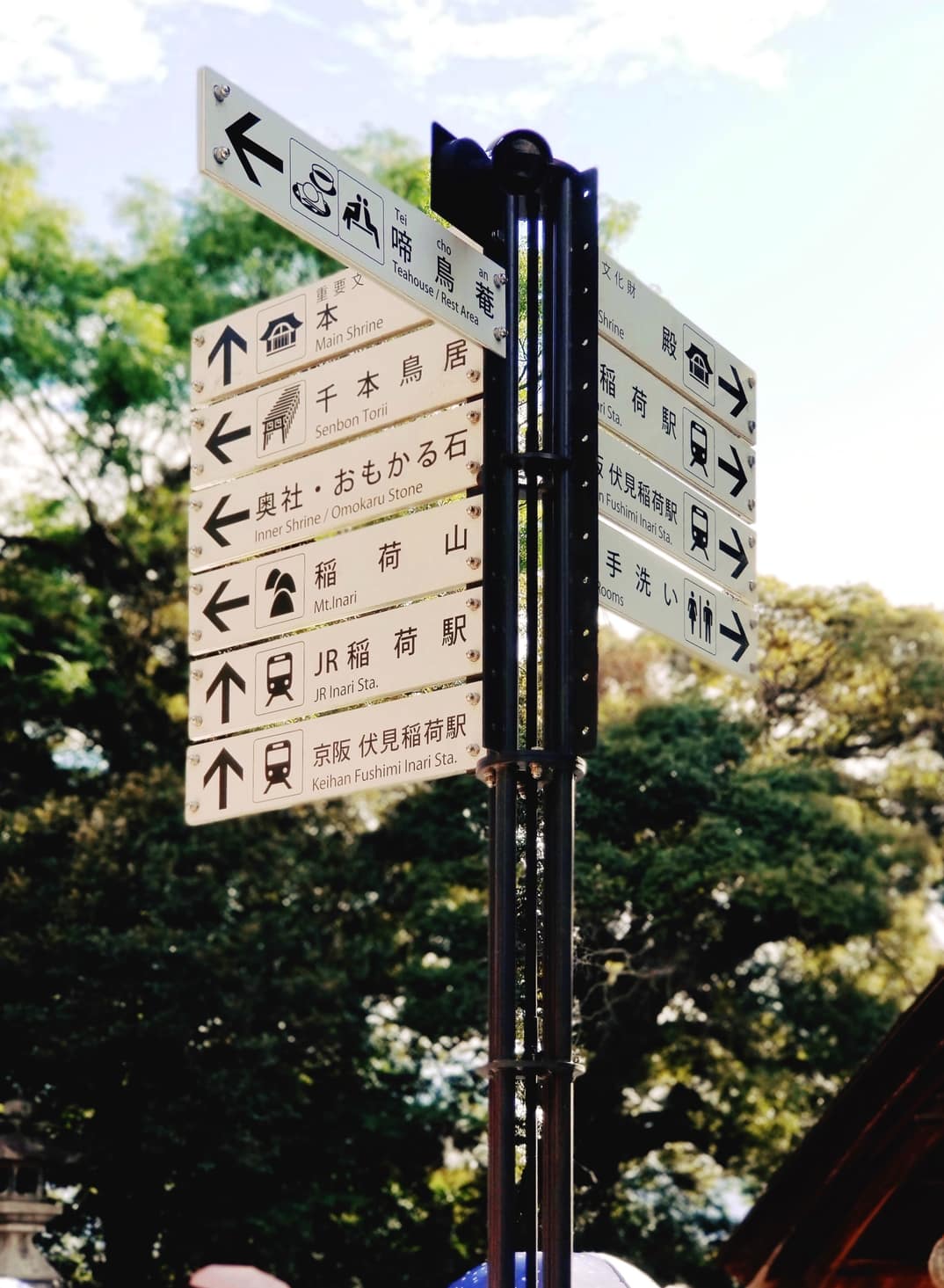
Photo by Sugarman Joe on Unsplash
Output, Nuance and the Road to Fluency
What does it mean to be fluent? The answer might change based on who you ask. While you can reach a high level of understanding without setting foot in Japan, anybody who aims for a native-like Japanese should prepare to make the trip, be it for a week or two, or a few months. If not to help your comprehension level (input), a visit to Japan will incomparably help the level to which you’re able to speak (output).
There’s no easy way to it, so the best speakers recommend throwing yourself in the thick of it. Going to a bar or open-space izakaya near your house and communicating with locals in real-time is the best thing you can do to improve your spoken Japanese. A good way to avoid slipping into using English is to try as hard as possible to never look up words you don’t know, especially in the middle of a conversation. Instead, ask to explain the word or concept to you in easy-to-understand Japanese. This might be hard to do as a beginner (especially for the ego), but once you can grasp a few words, it can definitely be beneficial.
In the age of Covid-19, this is of course not fully possible, so try finding an online community with online meetups or find a Japanese teacher willing to speak with you once a week. Another good way to get used to speaking Japanese is talking to yourself or reading out loud. Get your mouth used to producing Japanese sounds! For more unconventional ways of learning Japanese, see this fun language guide.
More Japanese language content from Tokyo Weekender:

